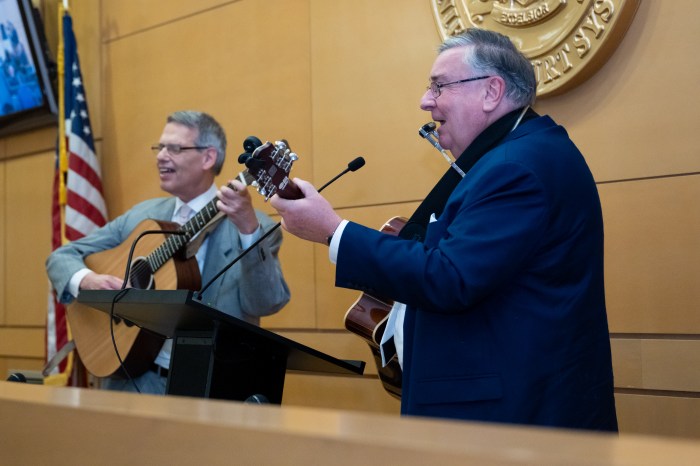Darrell Ceciliani is the best hitter in the history of the Brooklyn Cyclones — but does he have what it takes to be Jack Maloof?
Maloof, of course, was the last New York–Penn League player to hit .400, one of the single greatest achievements in baseball.
Maloof did it in 1971, hitting .402 for the Auburn Twins (now Doubledays). After Monday night’s game, Ceciliani was leading the league with a .389 batting average through 38 games. To reach Maloofian levels, he’d have to hit .411 the rest of the way.
Is it doable? Jack Maloof is proof of that. But can Ceciliani go where no Cyclone has gone before? Maloof considered the question for a second and let out a sigh.
“I don’t have the magic formula,” he said. “If there was a secret to it, you’d have people doing it all the time.”
Still, Maloof, now a batting coach in the Kansas City Royals organization, pointed to a few things that will help.
“You have to be consistent — you can’t be a streaky hitter,” he said. “You have to be confident. When you’re confident, the ball looks really big and slows down. And you can’t let the emotions of the season get to you. You’ve got to tune all that stuff out.”
Ceciliani is certainly consistent — he generally picks up two or three hits every game. And this Oregon native is definitely relaxed and confident about his job. Maybe that comes from being a 20-year-old without a worry in the world — even about hitting .400.
“I’m really not thinking about it at all,” he said. “I really am just trying to do the best for the team, take good swings, hit the ball hard and use the whole field. But I’m not worrying about any number.”
Spoken like a true Jack Maloof.
Actually, the parallels between Maloof and Ceciliani are striking.
Maloof hit .400 in his first season in Class A baseball, just as Ceciliani hopes to. Neither came from a “pedigree” college program — Maloof graduated from a teacher’s college called LaVerne and Ceciliani from Columbia Basin Community College.
And like Maloof, Ceciliani is not a power hitter, preferring to slap the ball around to all fields, and use his speed to turn singles into doubles, and keep the defense on its heels. He’s also a great bunter, with bunts accounting for about 10 of his hits this season.
And like Maloof, he’s focused on the job, not the number.
“I didn’t think about it until the last 10 days of the season,” Maloof said. “But the approach has to be the same — go out there and hit the ball solidly every single at-bat.”
If he achieves the Mark of Maloof, Ceciliani will go down in the history books. Beyond that, though, it’s unclear what would await. After all, one of the greatest hitters in league history only made it as high as AAA ball, though Maloof did play a single season in the Japanese major leagues, hitting .291 for the Seibu Lions.
That’s the thing about this game. Sometimes it takes more than the best batting average in decades. It takes luck.
In Maloof’s case, he happened to be part of the Minnesota Twins organization in the 1970s, a franchise that had more than enough .280-.300 singles hitters. On the last day of spring training in 1976, Maloof and eight-time all-star legend Tony Oliva were competing for the last spot on the big league club. Oliva got the job, playing out his final season as a fairly hapless pinch-hitter, while Maloof was sent to Triple-A Tacoma, never to be a prospect again.
But he’s had a great post-game career, coaching in the Marlins, Padres, Braves and Royals organizations, and even writing the book, “Hit Like a Big Leaguer,” in 2006 that had glowing endorsements from Maloof disciples Ozzie Guillen, John Kruk and Roberto Alomar, and the legendary Tony Gwynn.
Baseball, it seems, has been very very good to Jack Maloof.
Can it be so for Darrell Ceciliani? It all starts with a .411 streak the rest of the way.
“Tell him from me that I hope he does it,” Maloof said by phone from his Chandler, Ariz. home. “Records are meant to be broken.”





















